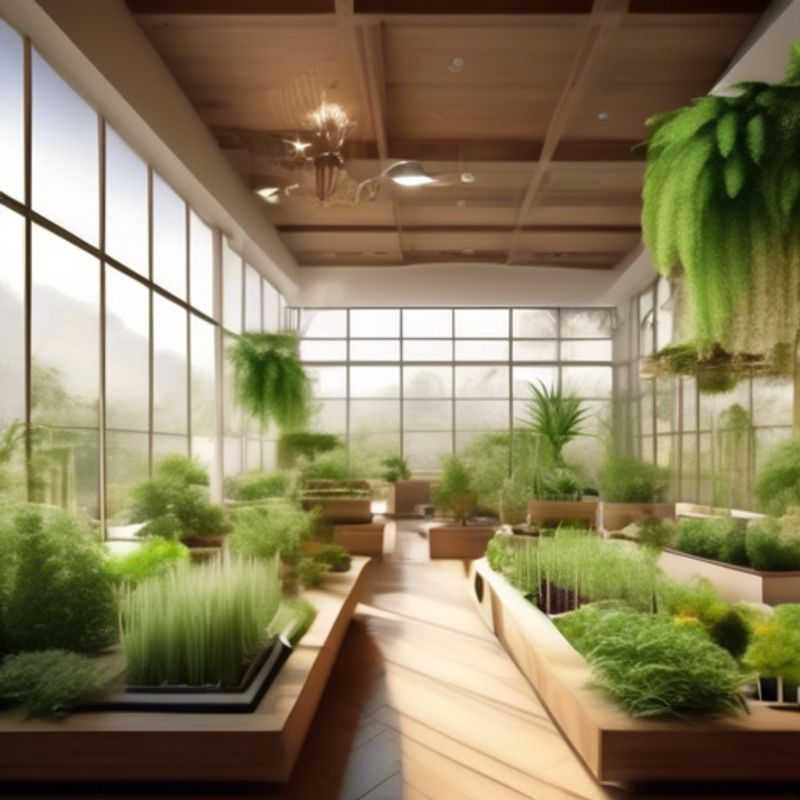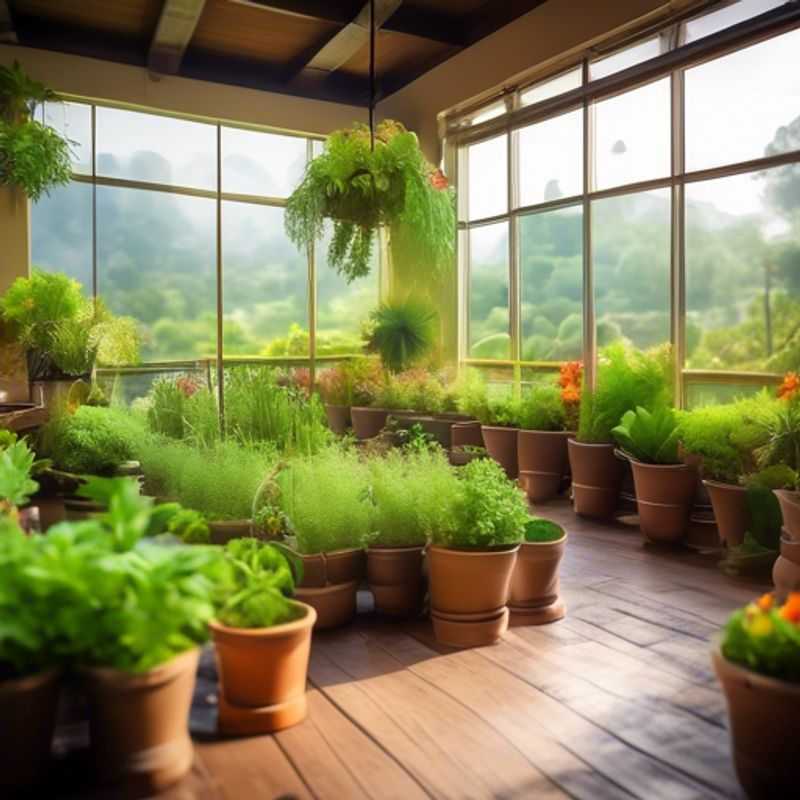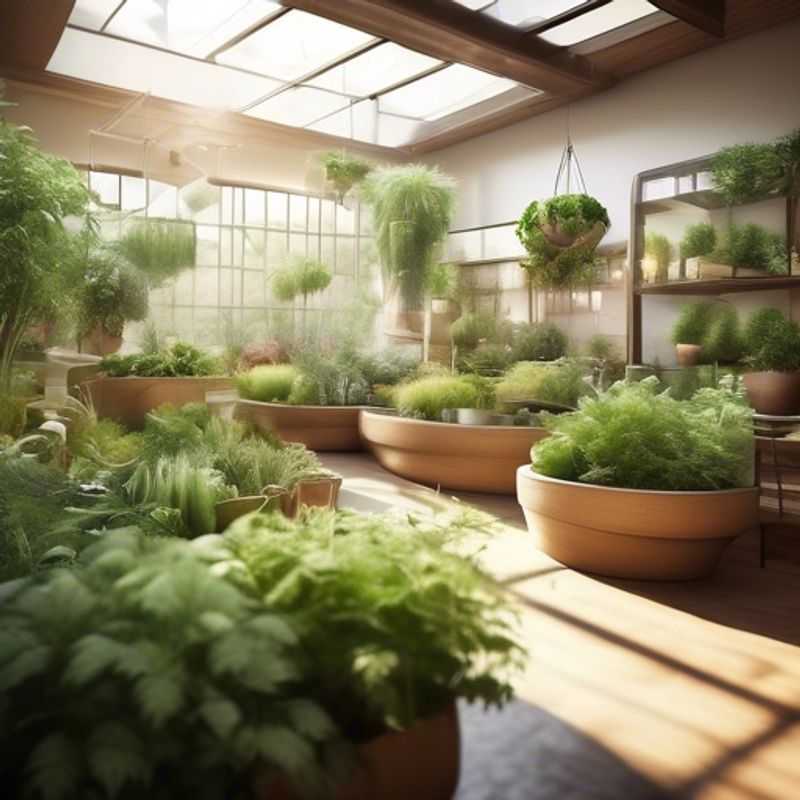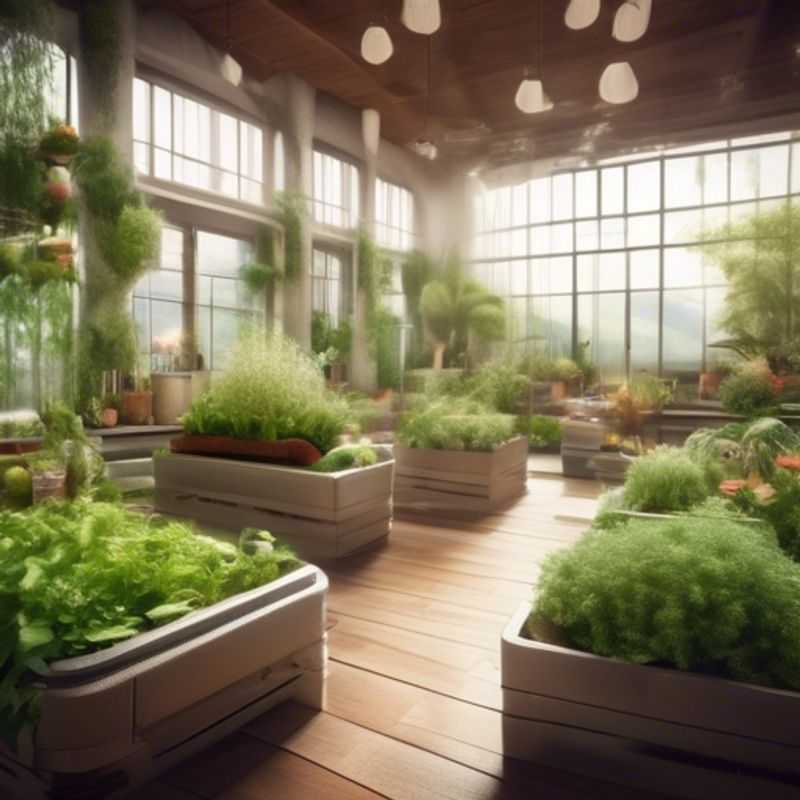Top 4 Most Important Things to Know Before Buying an Indoor Herb Garden

Size and Space Requirements: Planning Your Indoor Herb Haven
Lighting Needs:
Cultivating your own indoor herb garden is a rewarding experience, bringing fresh flavors to your kitchen and a touch of greenery to your home. But before diving into the world of indoor gardening, there are a few essential things to consider. Here's a breakdown of the top 4 factors to think about before you start growing your own herbs indoors:
1. Determine the size and space requirements: Herbs vary in size and growth habits. Some, like basil, can be compact, while others, like rosemary, need more space to thrive.

Planning Your Indoor Herb Garden: Size and Space Considerations
Planning an indoor herb garden is exciting, but first, you need to consider the space you have and the herbs you want to grow. It’s important to think about the size of the garden and the specific needs of each herb.
The size of your indoor herb garden depends on the space you have available. You can create a small herb garden on a windowsill, a larger garden on a countertop, or even a dedicated room or greenhouse. It's important to factor in the size of the pots or containers you will use for your herbs. Smaller herbs like mint and thyme can grow in smaller pots, while larger herbs like basil and rosemary may need larger pots.
Think about how much sunlight your herbs will need and how much space you can dedicate to your garden. Some herbs, like basil, need a lot of sunlight, while others, like cilantro, can tolerate partial shade. You can adjust the amount of sunlight your herbs receive by moving them around your home or by using grow lights.
When planning your herb garden, it’s important to consider the height and width of each herb. Some herbs grow tall, while others stay short and bushy. You can use this information to plan how you will arrange your herbs in your garden.
Lastly, you need to consider the cost of starting and maintaining your indoor herb garden. This includes the cost of pots, soil, seeds or seedlings, and any necessary lighting or other equipment. If you plan to purchase growing supplies, it’s a good idea to budget for these costs beforehand.
With a little planning, you can create a thriving indoor herb garden that will provide you with fresh, homegrown herbs all year round.

Illuminating Your Herb Garden: Tailoring Light to Your Plants' Needs
Lighting is a crucial aspect of growing herbs successfully. Each herb has unique light requirements that directly impact its growth, yield, and flavor. Researching the specific lighting needs of the herbs you plan to grow is essential.
Some herbs thrive in full sun, requiring at least six hours of direct sunlight daily. These include basil, rosemary, thyme, and oregano. Others, like mint, cilantro, and parsley, prefer partial shade, meaning they need protection from the intense afternoon sun.
If you're growing herbs indoors, you'll need to provide artificial lighting. Fluorescent or LED grow lights are excellent choices, providing the right spectrum of light for healthy plant growth.
When researching lighting needs, consider the time of year. Sunlight hours vary throughout the year, affecting your herb's light exposure. For example, herbs that require full sun during the summer months may need to be relocated or supplemented with artificial lighting during the shorter days of winter.
Remember, understanding the specific lighting requirements of your chosen herbs is key to achieving optimal growth and enjoying their delicious flavors.

Tending to Your Green Oasis: Maintenance and Watering for an Indoor Herb Garden
Indoor herb gardens offer a delightful way to bring fresh flavors into your kitchen, but maintaining their health requires a bit of care. The key is to understand their specific needs and create a consistent routine. Consistent watering is crucial. Most herbs prefer slightly moist soil, but overwatering can lead to root rot. Check the soil moisture with your finger, and water only when the top inch feels dry.
Lighting is equally important. Most herbs thrive in bright, indirect sunlight. If you don't have a sunny windowsill, consider using grow lights to supplement their natural light. Proper drainage is essential to prevent waterlogging. Choose pots with drainage holes and use a well-draining potting mix.
Regular pruning helps maintain the shape and encourages bushier growth. Pinch off flower buds to promote leaf production. Consider using organic fertilizers to provide essential nutrients. You can find a variety of fertilizers specifically designed for herbs.
Keep an eye out for pests like aphids and spider mites. Use natural solutions like insecticidal soap or neem oil if necessary. With a little effort, you'll be rewarded with a thriving indoor herb garden and a flavorful supply of fresh herbs for your culinary adventures.

Choosing the Right Container: Drainage Matters
Choosing the right container for your plants is crucial for their health and well-being. Proper drainage is essential to prevent root rot, a common problem caused by excessive moisture. Ensure your container has drainage holes at the bottom. This allows excess water to escape, preventing the soil from becoming waterlogged.
The material of the container also plays a role in drainage. Terracotta pots are known for their porous nature, allowing water to evaporate quickly. Plastic containers, on the other hand, can retain moisture for longer periods. Consider the plant's needs and the climate you live in when selecting a material.
The size of the container is important too. A pot that is too small can restrict root growth, while one that is too large can lead to overwatering. Opt for a pot that is slightly larger than the plant's root ball, allowing for some room for growth.
Additionally, consider adding a layer of drainage material at the bottom of the container, such as gravel or pebbles. This helps to improve drainage and aeration. Remember, proper drainage is vital for healthy plant growth. By choosing the right container and ensuring adequate drainage, you can provide your plants with the optimal environment to thrive.
